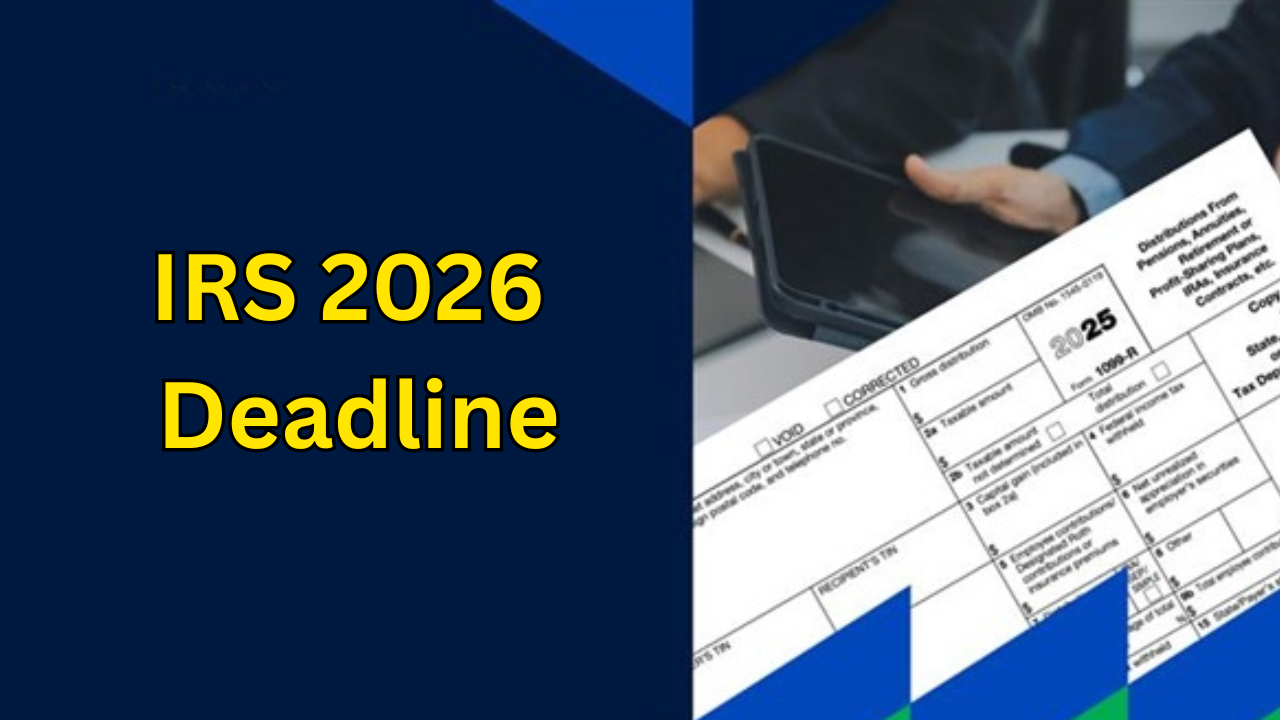Originally posted on September 20, 2025 @ 4:39 AM
IRS 2026 Deadline: When it comes to filing taxes, missing important dates can cost you time, money, and peace of mind. That’s why staying informed about the IRS 2026 deadline and related filing dates is essential for every taxpayer. Whether you’re filing as an individual, self-employed, or a small business owner, understanding the key deadlines will help you stay organized and avoid costly penalties.
This beginner-friendly guide covers everything you need to know about the IRS 2026 deadline, including important tax dates, filing extensions, payment schedules, and tips to stay ahead of the curve.
Why the IRS 2026 Deadline Matters
Each year, the Internal Revenue Service (IRS) sets a Tax Day deadline for filing your federal income tax return. In 2026, this date determines when your taxes are due and when payments must be made.
Missing the IRS 2026 deadline can result in:
Late filing penalties (usually 5% of unpaid taxes per month).
Late payment penalties (0.5% of unpaid taxes per month).
Accrued interest on any outstanding balance.
By marking key dates on your calendar, you’ll ensure that your tax season is less stressful and more manageable.
Key IRS 2026 Deadline Dates to Remember
1. January 31, 2026 – Tax Form Deadlines
By this date, employers and businesses must send out important tax forms:
W-2 forms for employees.
1099 forms for freelancers, contractors, and gig workers.
Having these forms early ensures you can begin preparing your return on time.
2. April 15, 2026 – Tax Day (Primary IRS 2026 Deadline)
This is the most important date:
Individual income tax returns (Form 1040) are due.
Taxes owed must be paid in full by this date to avoid penalties.
Last day to contribute to an IRA for the 2025 tax year.
If April 15 falls on a weekend or holiday, the deadline may shift to the next business day.
3. April 15, 2026 – Filing Extensions
If you’re not ready by Tax Day, you can file Form 4868 for an automatic 6-month extension.
Extended filing deadline: October 15, 2026.
Important: An extension gives you more time to file, but not more time to pay. Payments are still due on April 15.
4. Quarterly Estimated Tax Deadlines (for self-employed & freelancers)
If you’re self-employed or earn income not subject to withholding, you must make estimated tax payments:
April 15, 2026 – First quarter
June 15, 2026 – Second quarter
September 15, 2026 – Third quarter
January 15, 2027 – Fourth quarter (for 2026 earnings)
5. October 15, 2026 – Extended Filing Deadline
If you filed for an extension, this is your final chance to submit your tax return.
Business Filing Deadlines in 2026
Businesses also need to keep track of the IRS 2026 deadline:
March 15, 2026 – Partnership (Form 1065) and S Corporation returns (Form 1120-S) due.
April 15, 2026 – C Corporation returns (Form 1120) due.
Extensions are available, but payments are still due on the original deadlines.
How to Stay Ahead of the IRS 2026 Deadline
Filing taxes doesn’t have to be stressful. Here are some tips to make the process smoother:
Organize Early
Keep receipts, W-2s, 1099s, and deduction records in one place.Use IRS Online Tools
Create an account at IRS.gov to track refunds, make payments, and view tax transcripts.Set Reminders
Mark important tax dates in your phone or planner to avoid last-minute panic.Consider E-Filing
E-filing is faster, more accurate, and ensures quicker refunds.Seek Professional Help
A tax professional can help maximize deductions, handle complex filings, and ensure you never miss the IRS 2026 deadline.
Common Mistakes Taxpayers Make
When it comes to the IRS 2026 deadline, these are some of the most frequent errors people make:
Filing late without requesting an extension.
Paying after April 15. Extensions don’t delay payment deadlines.
Forgetting quarterly estimated taxes. Self-employed individuals must plan ahead.
Incorrect personal information. A simple typo can delay your return.
Missing deductions and credits. Always double-check eligibility for credits like the Child Tax Credit or Earned Income Tax Credit.
Conclusion
The IRS 2026 deadline is one of the most important dates for taxpayers to remember. Missing it can lead to penalties, interest, and unnecessary stress. By staying organized, understanding key tax dates, and using available resources, you can make tax season smoother and more efficient.
Whether you’re filing as an individual, freelancer, or business owner, planning ahead for the IRS 2026 deadline ensures you stay compliant and avoid costly mistakes. Mark these dates on your calendar, set reminders, and consider professional help if your situation is complex. Tax season doesn’t have to be overwhelming—preparation is the key to peace of mind.
Frequently Asked Questions (FAQs)
1. What is the IRS 2026 deadline for individual taxpayers?
The main deadline is April 15, 2026, for filing Form 1040 and paying any taxes owed.
2. Can I get more time to file my taxes in 2026?
Yes. You can file Form 4868 for a 6-month extension, moving your filing deadline to October 15, 2026. However, payments are still due April 15.
3. What happens if I miss the IRS 2026 deadline?
You may face late filing and late payment penalties, plus interest on any unpaid balance.
4. Are quarterly estimated tax payments part of the IRS 2026 deadline?
Yes. If you’re self-employed, you must make estimated tax payments four times a year, with the first due April 15, 2026.
5. Do businesses have different deadlines?
Yes. Partnerships and S Corporations file by March 15, 2026, while C Corporations file by April 15, 2026.


